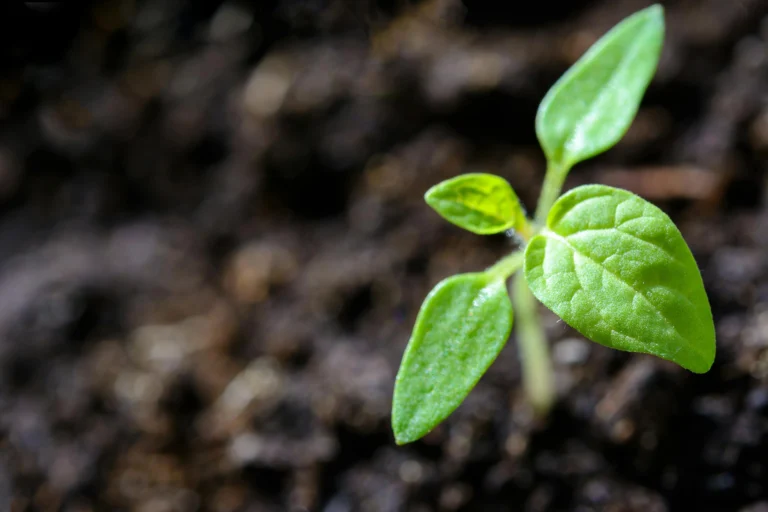From Soil Microbiome to Gut Microbiome

As natural and anthropogenic pressures on the pedosphere rise, so do concerns about climate change’s impact on our health. Dynamic shifts in temperature and weather patterns affect the biological and physical properties of the soil that grows our food. Thus, climate change may impact the nutrients we consume and the overall health of our gut microbiome.
Home to an incredibly diverse array of microbes, soil is a biologically active system that our Earth uses to recycle and sustain life. A soil microbiome rich in agrobiodiversity raises healthy plants through advantageous influences on plant growth and acquisition of resources. Plants rely on soil microbes to stimulate root expansion and to mediate the bioavailability of most essential nutrients through nutrient cycling. The soil’s microbiome is a community of several types of microbes, including bacteria, fungi, and archaea. These microorganisms extend services tailored to the needs of the soil’s vegetation. Mycorrhizal fungi, for example, are involved in filtering and storing water for plant use, and a greater diversity of these fungi is related to increased biomass. Other fungi like P. indica protect plants from pathogens and viruses and enhance resilience to stressors like drought and salt through hormone and metabolite production.
When the environment undergoes changes in temperature, moisture, and available nutrition levels, the viability of microbes in the soil morphs. The abundance and functional abilities of microorganisms depend on their species-specific resilience to these abiotic stress variables like fluctuations in acidity. Climate transformations modify the species and activity profiles in the region, from relative abundance to overall biodiversity. They can also permit the growth of soil-borne pathogens that harm plants and humans directly, such as by inciting disease processes or indirectly through other means of exposure.
What we ‘feed’ into the ground impacts the soil microbiome. Shifts in agriculture practices, such as the use of pesticides and chemical fertilizers to meet surges in crop yield demands, can be attributed, in part, to climate change. While these may increase agricultural output, soil microbiome diversity and crop health are often compromised.
Additionally, harsher storms lead to more devastating agricultural soil erosion. When eroded, the soil that usually acts as a buffer between pollutants and plants can no longer do its job. This allows for more pollutants and agrochemicals to settle into the soil, negatively affecting soil fertility.
When nutrients are present at stable levels in the soil, the nutritional quality of the food harvested is high. Most of our recommended health-supporting minerals come from the plants we eat or from animals who once ate them. When eating plant-based foods, we introduce nutrients that interact with our gut microbiome for immune, metabolic, and endocrine pathways that lead to benefits in human health. Our minerals shape the gut microbiome by supporting beneficial bacteria diversity and function. They are essential for processes like neutralizing free radicals, optimizing neuronal function, and regulating cellular energy. Yet, as climate change continues to escalate, soil fertility steadily diminishes, leading to alterations in the minerals and nutrients plants can absorb from the soil. For instance, researchers have shown that the concentrations of protein, calcium, iron, and zinc of grain crops significantly decrease in elevated carbon dioxide conditions.
Due to the implications on our health, scientists and politicians should advance sustainable farming methods to help mitigate the harmful effects climate change has on our soil. Promisingly, crop diversification techniques enhance the management of natural resources and nutrient cycling in the soil microbiome while reducing crop vulnerability to climate shifts. Microbial diversification strategies improve plant productivity and nutrient uptake while blunting pathogenesis. Together, agricultural diversification can aid food security by sustaining a high output and variety of salubrious foods for people to eat.
It seems that by prioritizing soil health, we can grow more nutritious crops and build a balanced gut—nurturing our body from the ground up.
